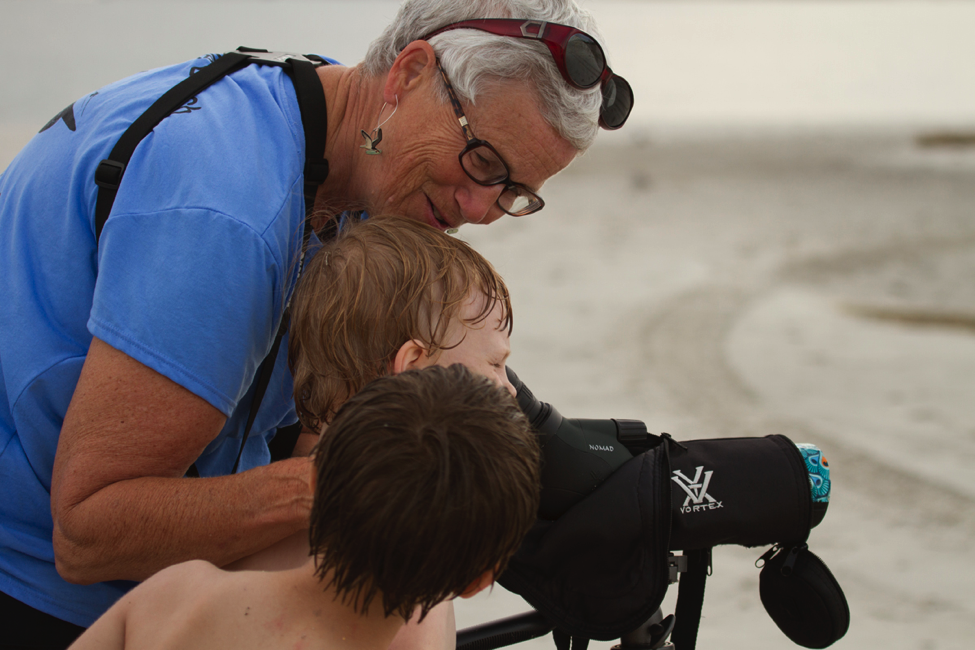For more than 25 years, Audubon North Carolina has managed a network of coastal sites along our state’s coast offering a haven for nesting beach birds. By protecting the specialized habitats that birds need, shorebirds have a chance to thrive. Read on to learn more about sharing our beaches and the big benefits it can bring to our priority birds.
Take a walk at the south end of Wrightsville Beach and the sand will seem alive with Least Tern chicks running back and forth, seeking shade and begging for fish from their parents. It’s a great time to see lots of activity at the site, and a great time to think about how this nesting site fits into the bigger picture.
A need for space:
The numbers of adults and chicks at the south end don’t just seem large—they are. In 2015, our census of the Least Tern nests revealed 232 nests, with additional pairs still starting to renest. That is about seven percent of the state’s nesting Least Terns! Not to be outdone, the Black Skimmer census found 175 nests. That set a new record for the number of skimmers nesting at the south end and makes up nearly 21 percent of the state’s nesting skimmers!

That means this site is important not only for the great wildlife viewing opportunities it presents, but because it holds significant percentages of North Carolina’s Least Tern and Black Skimmer populations.
Beach-nesting birds like the terns and skimmers do not have as much habitat to nest in as they once did. Though they are adapted to survive extreme conditions on the beach (such as temperatures that top out near 100 degrees) and renest doggedly after an early storm washes out their nests (they are eternal optimists), they can’t compete with humans for habitat unless we choose to help them.
Making room for birds:
Beach-nesting birds are easily flushed off their nests and separated from their young chicks. That leaves the chicks exposed to many dangers— temperature stress, predation from gulls and crows and even abandonment, if the disturbance is so severe or so long that parent birds become too stressed out to return to the site. Therefore, posted areas help beach-nesting birds by providing them with the buffer distance they need to tend to their young.
When they have space, birds can succeed spectacularly. At the south end of Wrightsville Beach, the skimmers have fledged at least 228 chicks, which averages over one chick per pair: an excellent number. We know this by the counting fledgling skimmers, which stay around the colony for weeks or even a month or more after fledging.
Least Terns have produced fledglings at likely about the same rate, but they are harder to count because they depart within a week or two. Our high count of 133, followed by regular counts of over 50 in following weeks suggests that more than 200 young Least Terns took wing from the colony.
By setting aside space at beaches around the state, many agencies and organizations are helping these birds succeed. The south end of Wrightsville Beach is just one piece of the puzzle, but it’s a big piece. If the posting and the outreach and education provided by the Beach Bird Stewards can ensure that the colony is free of disturbance and a safe place for the young chicks to grow up, the south end of Wrightsville Beach can make a big contribution to this year’s class of terns and skimmers.
That’s good news not only for the birds who are working hard to raise their next generation, but also for our next generation. Today’s kids will be able to show their kids and grandkids the great-great-great grandchicks of these birds and share the same joy and wonder that they experienced when they first saw a fuzzy little chick.
Learn more about Audubon North Carolina’s conservation efforts to protect the seas and shores our birds need to thrive.



